20 Stunning Yellow Gemstones: Names, Meanings & Where to Find Them

Yellow gemstones are some of the most vibrant and eye-catching gems in the world. Their sunny, golden hues make them a popular choice for jewelry, healing stones, and collector's items. From bright lemony sparkles to deep, golden browns, yellow gems can bring warmth and cheer to any setting.
In this guide, we'll explore 20 stunning yellow gemstones, their meanings, how they form, and even where you might be able to find them in the wild. Whether you're a gem enthusiast, rockhound, or someone simply curious about these radiant stones, you'll walk away with a clearer answer to the question: what gemstones are yellow?
Why Are Some Gemstones Yellow?
Gemstones get their yellow color from various natural processes and chemical elements. For example, iron can give quartz and topaz a yellowish hue, while nitrogen is responsible for yellow diamonds. Heat and radiation treatments can also enhance or change the color of gemstones, turning pale stones into brilliant yellow jewels.
Yellow can appear in gemstones in many shades—from bright canary yellow to golden amber, even to a yellowish brown or yellowish green tone. Because of this variety, there's a wide range of yellow precious stones and yellow semi precious stones available today.
The Symbolism and Meaning of Yellow Gemstones
Throughout history, yellow colored gemstones have symbolized happiness, optimism, and enlightenment. People believe these gems promote mental clarity, boost energy, and even attract wealth. In many cultures, yellow stones are thought to support the solar plexus chakra, which is associated with personal power and confidence.
Whether you wear a gold colored gemstone for style or spiritual balance, these stones often carry meanings of joy and abundance. They're the perfect match for people looking to bring more light and positivity into their lives.
The 20 Most Stunning Yellow Gemstones
Now, let's dive into 20 beautiful yellow gemstones. We'll cover their appearance, origins, symbolism, and where you might find them.
1. Yellow Diamond
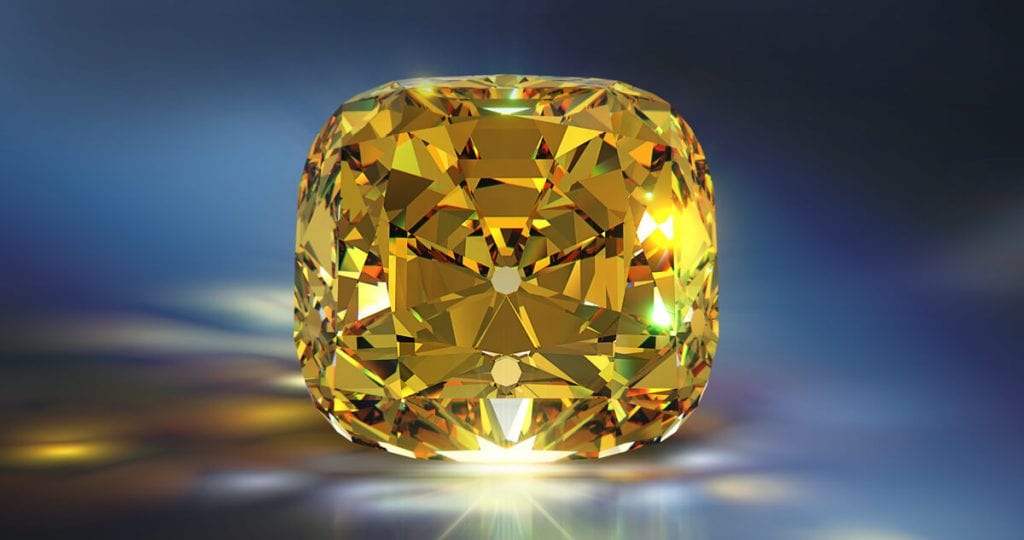
These are among the rarest and most valuable yellow precious stones. Their color comes from traces of nitrogen within the crystal structure. Yellow diamonds are graded from faint yellow to fancy vivid yellow, with the deepest colors fetching the highest prices. They symbolize love, prosperity, and clarity.
2. Yellow Sapphire
Known for its brilliant golden hue, yellow sapphire is a highly prized gem in both jewelry and Vedic astrology. It's considered a powerful stone for bringing wisdom, luck, and prosperity. Most yellow sapphires come from Sri Lanka, but you can also find them in parts of Madagascar and Thailand.
3. Citrine
A popular yellow semi precious stone, citrine is a type of quartz that ranges in color from pale yellow to deep amber. It's widely available and often used in affordable jewelry. Citrine is said to carry the energy of the sun, promoting optimism and clearing negative energy.
4. Golden Beryl (Heliodor)
Heliodor, or golden beryl, is a stunning yellow colored gemstone that belongs to the same family as emeralds and aquamarines. Its name means "gift from the sun," and it's believed to strengthen willpower and self-confidence.
5. Yellow Topaz
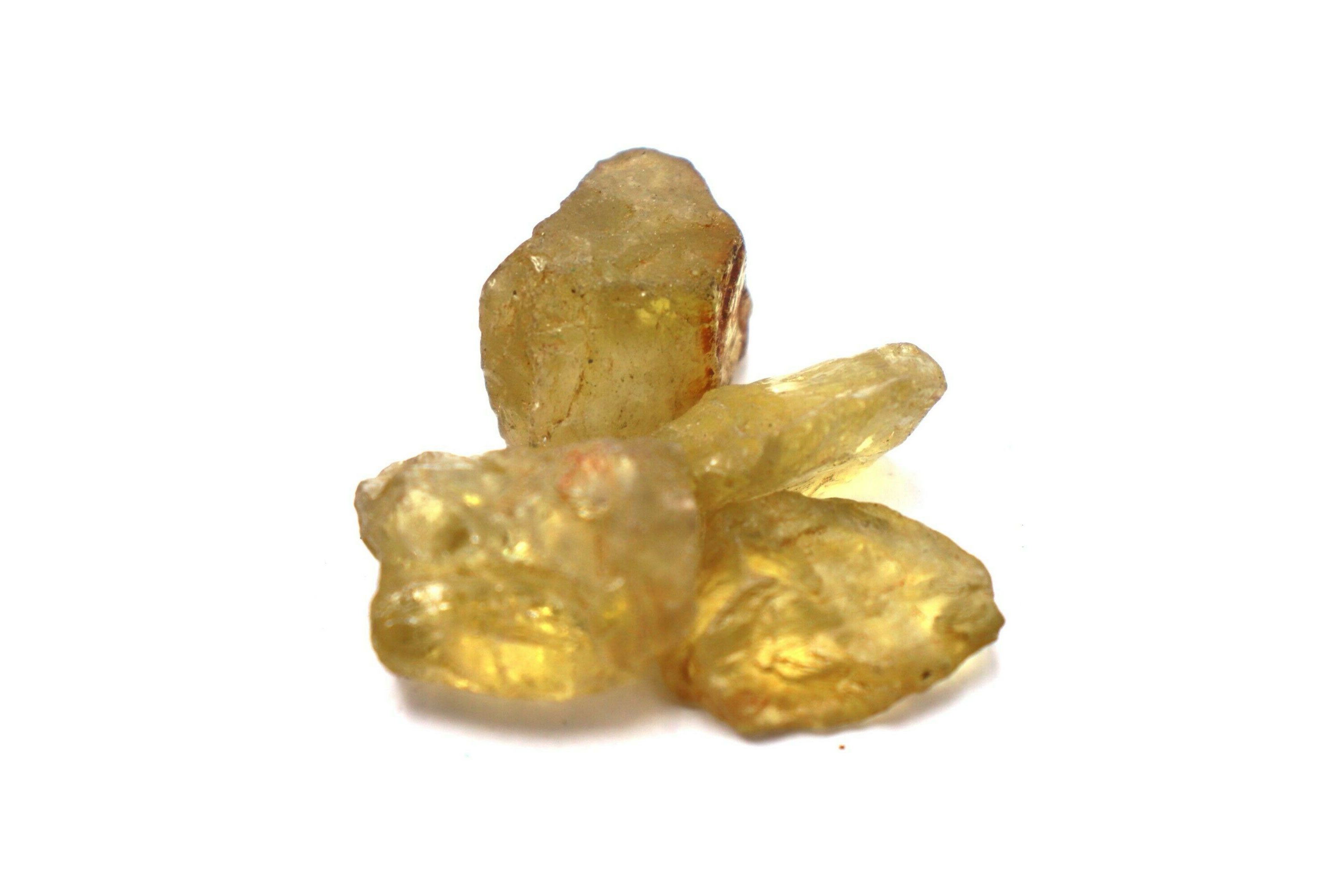
Yellow topaz can be found in light yellow to rich gold tones. It's a durable and affordable gemstone often used in rings and pendants. Yellow topaz is linked with abundance and creativity.
6. Amber
Technically not a mineral but fossilized tree resin, amber ranges from golden yellow to deep brown. It's known for preserving ancient insects and has been used for centuries in spiritual practices. Amber is believed to offer protection and grounding.
7. Sphene (Titanite)
Sphene is a rare gemstone with a strong fire or sparkle, often appearing yellowish green. Though soft and less suited for everyday jewelry, it's highly prized by collectors. It's believed to stimulate the mind and intellect.
8. Chrysoberyl
Chrysoberyl comes in various yellowish green and golden hues. Not to be confused with cat's eye chrysoberyl, the faceted versions are highly transparent and reflect light beautifully. They symbolize discipline and self-control.
9. Yellow Zircon
Yellow zircon is known for its brilliance and fire, similar to diamonds. It often comes in honey or golden yellow shades. It's believed to aid sleep and bring prosperity.
10. Yellow Apatite
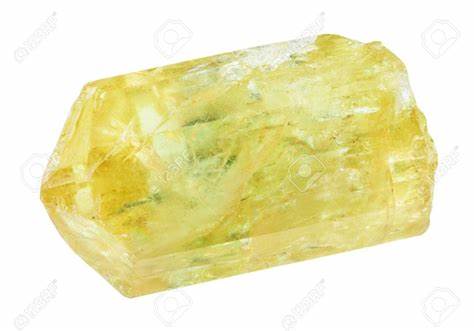
This lesser-known gem is valued for its bright lemon color and transparency. It's a soft stone, but collectors and metaphysical users appreciate its ability to boost motivation and intellect.
11. Scapolite
Yellow scapolite is rare and attractive, found in shades ranging from creamy yellow to orangey gold. It's said to encourage problem-solving and transformation.
12. Fluorite
Though commonly purple or green, fluorite also comes in yellow varieties. Yellow fluorite is said to boost creativity and logic. It's often found in large, transparent crystals.
13. Andalusite
Andalusite can show multiple colors in one gem, often including yellowish brown or greenish yellow tones. It symbolizes balance and helps align mental and emotional energies.
14. Yellow Garnet (Mali Garnet)
Most garnets are red, but Mali garnets display a beautiful yellow to greenish yellow hue. They are a mix of grossular and andradite garnet species and symbolize regeneration and healing.
15. Legrandite
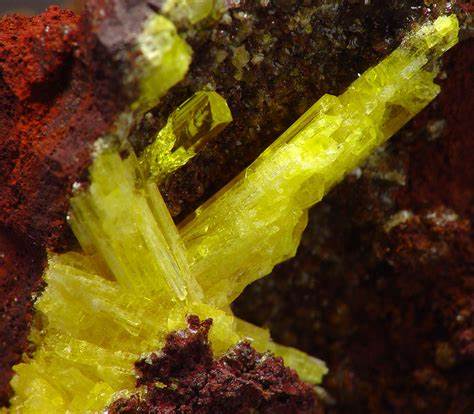
An extremely rare collector's gem, legrandite is a bright yellow mineral found in a few locations like Mexico. It's fragile but visually stunning, representing clarity and rare insight.
16. Sulfur Crystals
Bright yellow and easily recognizable, sulfur is not used in jewelry but is fascinating to collectors. Found in volcanic regions, sulfur symbolizes cleansing and transformation.
17. Yellow Jade
Though not as well-known as green jade, yellow jade offers a warm, buttery color. It's thought to bring emotional balance and attract good luck.
18. Yellow Idocrase (Vesuvianite)
Named after Mount Vesuvius, idocrase is a yellow-green gemstone that's said to help release negative thought patterns. It's found in skarn deposits near volcanoes.
19. Orthoclase
Orthoclase feldspar appears in soft golden hues and is sometimes used in custom jewelry. It's linked to inner peace and aligning one's higher purpose.
20. Yellow Moonstone
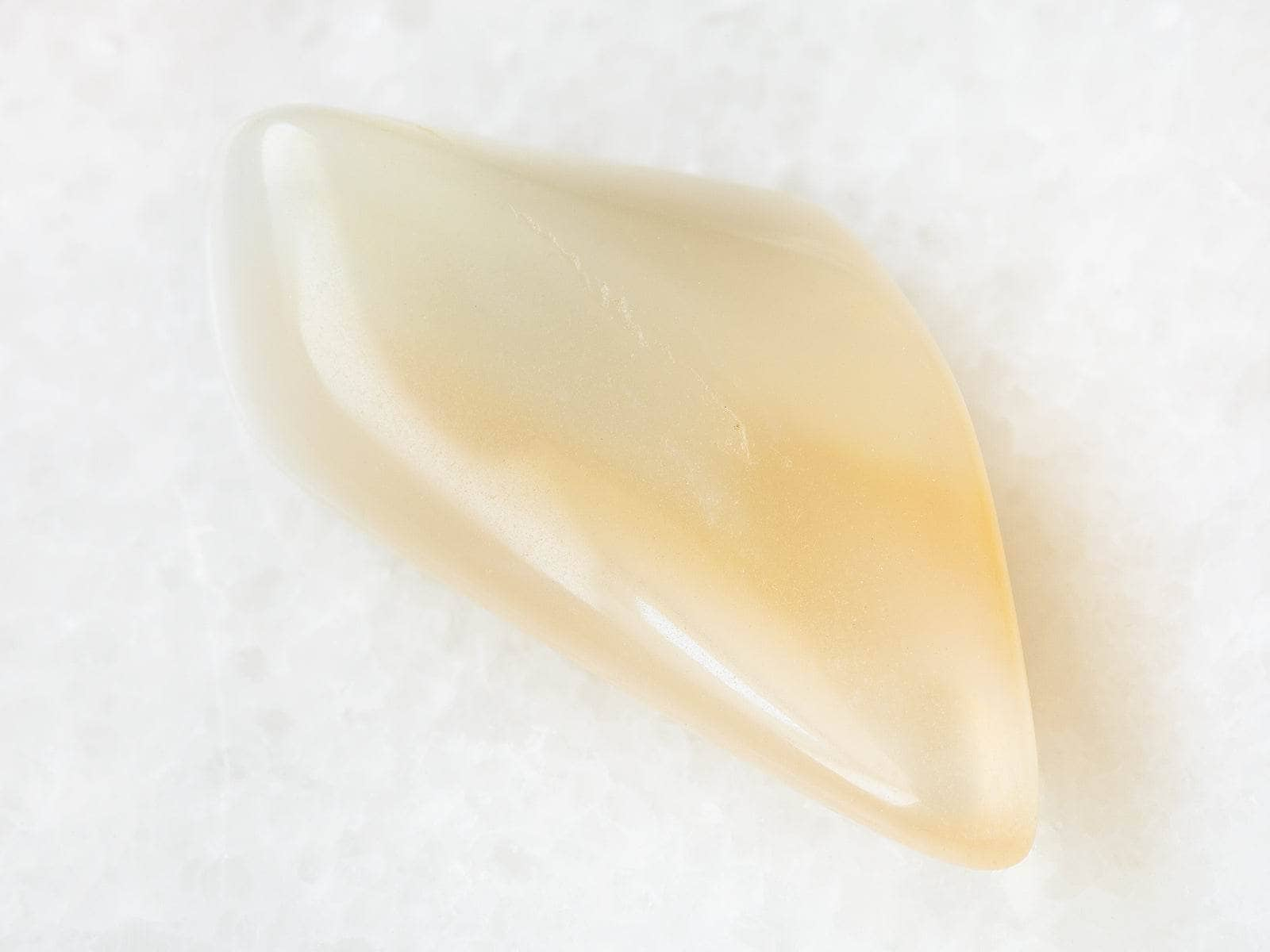
A rare variant of moonstone, this gem offers a golden sheen and soft, milky luster. It's associated with intuition, feminine energy, and emotional healing.
Where Can You Find Yellow Gemstones?
If you're a rockhound, you might be excited to know that many yellow gemstones can be found right here in the United States. Citrine and yellow quartz varieties are often found in North Carolina and Colorado. Yellow topaz can sometimes be sourced in Utah, while amber has been found along the Gulf Coast.
Please always bring appropriate attire and do research before venturing out to rock hunt and crystal hunt. Also, be sure to verify that the location you want to hunt at is available for public access. Rockhounding.org does our best to verify, but it is your responsibility to verify as well because sometimes things change. We are not liable for any actions you take from the information you find on this site.
Always make sure you're digging in a legal, public gem mining site. Some places even offer guided tours and let you keep what you find. It's a great way to discover yellow colored gems in their natural setting.
How to Assess Color and Quality in Yellow Gemstones
When it comes to yellow gemstones, not all stones are created equal. Some sparkle with golden brilliance, while others have a dull or muddy appearance. So how can you tell if a yellow gem is high quality?
The answer lies in a few key characteristics: color, clarity, cut, and carat weight—often referred to as the 4 Cs. Here's how they apply specifically to yellow colored gemstones:
Color is the most important factor for yellow stones. The best gems have a pure, vibrant yellow hue—like lemon, golden sunshine, or deep amber. You want to look for stones that have strong saturation and consistent color throughout. Some stones may lean slightly toward green or brown (like yellowish green gemstone or yellowish brown gemstone types), which can be beautiful in their own right but may lower value depending on market demand.
Clarity is also important, especially for transparent yellow gems like yellow sapphire or citrine. The fewer inclusions (tiny flaws or particles inside the gem), the better. A perfectly clear gem will sparkle more and allow light to pass through beautifully.
Cut refers to how well the gem is shaped. A good cut enhances brilliance and makes the stone look more alive. If a yellow gem looks flat or lifeless, it may not be cut well, even if the color is great.
Carat weight affects price but not necessarily beauty. Some small yellow gemstones are more vivid than large ones, so go by quality first, size second.
Lastly, consider treatment and enhancement. Some yellow stones are heat-treated or irradiated to improve their color. This isn't always bad, but untreated, natural gems are generally more valuable.
Yellow Gemstones for Everyday Jewelry Wear
If you're looking for a yellow gem that can handle the bumps and scrapes of daily life, you'll want something tough, stable, and easy to clean.
Some of the best yellow gemstones for everyday wear include:
- Yellow Sapphire -- With a hardness of 9 on the Mohs scale, it's second only to diamond in toughness. It's bright, beautiful, and extremely durable.
- Citrine -- This yellow semi-precious stone is a type of quartz, scoring 7 on the Mohs scale. It's tough enough for rings, earrings, and necklaces you wear every day.
- Golden Beryl (Heliodor) -- With good hardness and stunning clarity, heliodor is both beautiful and wearable.
- Yellow Garnet (Grossular) -- Not as common but tough enough for regular use, especially in pendants and earrings.
When wearing yellow gems daily, keep them clean and store them away from harder stones like diamonds to avoid scratches. Rings may be exposed to more wear and tear than necklaces or earrings, so choose stronger stones for your hands.
Yellow Gemstones Better Suited for Occasional Wear
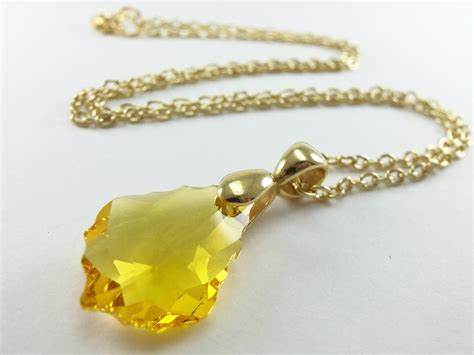
Some yellow gems are gorgeous, but not tough enough to handle daily wear and tear. These stones are better reserved for special occasions or jewelry that won't be worn every day.
Examples include:
- Yellow Topaz -- Beautiful and sparkly, but it can chip easily if hit the wrong way.
- Yellow Fluorite -- Often soft and prone to scratches, but the color can be stunning.
- Amber -- Technically not a mineral but fossilized tree resin, amber is soft and sensitive to chemicals, heat, and sunlight.
- Sphene (Titanite) -- Known for its rainbow sparkle (dispersion), but it's too soft for everyday rings or bracelets.
- Yellow Apatite -- Eye-catching in color, but easily scratched or fractured.
These yellow jewels can still make breathtaking pendants, brooches, or collector pieces. Just handle them with a bit of extra care.
Yellow Gemstones Primarily for Collectors
Some yellow stones are prized more for their rarity or unique properties than their durability. These are ideal for collectors, display cases, or gentle use—not heavy-duty jewelry.
Some collector favorites include:
- Legrandite -- A striking, bright yellow crystal that's extremely rare and fragile.
- Sulfur Crystals -- Often found in vivid yellow hues, but they're very soft and unstable.
- Yellow Scapolite -- Interesting to collectors due to its color and crystal habit, but not very durable.
- Danburite -- Sometimes shows a yellow tint and is valued for its spiritual meaning, though less common in jewelry.
- Chrysoberyl (non-cat's eye) -- Sometimes golden or yellowish green, and highly collectible.
Collectors often value these yellow gems for their origin, crystal formation, and unique optical effects (like sparkle or fluorescence). They're not made for wear, but they're fascinating to admire and study.
Frequently Asked Questions About Yellow Gemstones
1. What gemstones are yellow naturally?
+Many gems occur naturally in yellow shades. Some common natural yellow stones include citrine, yellow sapphire, yellow garnet, and heliodor (golden beryl). These don't always require treatment to achieve their color.
2. What gem is yellow and expensive?
+Yellow diamond and yellow sapphire are among the most expensive yellow gemstones. Their value increases based on color intensity, clarity, and rarity.
3. What stone is yellow and sparkly?
+Citrine and yellow sapphire are well-known for their brilliance. Yellow topaz and sphene also have beautiful sparkle but may be less durable.
4. Is citrine a yellow precious stone?
+Citrine is technically a semi-precious stone, as it's a variety of quartz. Still, it's one of the most popular yellow-colored gems for jewelry and metaphysical use.
5. What is the rarest yellow gem?
+Some of the rarest include legrandite, yellow tourmaline, and yellow chrysoberyl. High-quality, untreated yellow diamonds are also quite rare.
6. Do yellow gemstones fade over time?
+Some, like amber or yellow fluorite, can fade with long-term exposure to sunlight or heat. Others, like sapphire or citrine, are more stable and hold their color well.
7. Can I find yellow gemstones while rockhounding?
+Yes! In the U.S., states like Arizona, California, Arkansas, and Maine are great for finding yellow stones like citrine, yellow garnet, golden beryl, and even topaz. Always make sure you're digging legally and safely.
8. What is a yellowish brown gemstone?
+Some gems like andalusite, smoky citrine, or brownish topaz may have yellowish brown hues. These can add warmth and uniqueness to jewelry.
9. Is there a yellowish green gemstone?
+Yes. Sphene, chrysoberyl, and some garnets can show yellowish green tones, depending on lighting and composition.
Conclusion
Yellow gemstones are as diverse as they are dazzling. Whether you love the brilliant sparkle of a yellow diamond, the earthy glow of amber, or the rare beauty of legrandite, there's a yellow gem out there for everyone. These stones offer not just beauty but also deep symbolic meanings, often connected to light, optimism, and personal growth.
So the next time you wonder what stone is yellow or are searching for the names of yellow precious stones, come back to this guide. Better yet, grab your tools and go rockhounding—you just might find a piece of golden sunshine hidden in the earth.
